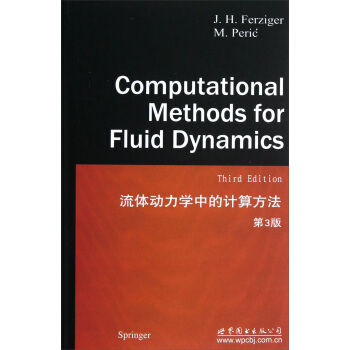![计算流体动力学导论:有限体积法(第2版)(英文版) [An Introduction To Computational Fluid Dynamics:The Finite Volume Method Second Edition]](https://pic.tinynews.org/10104524/420254d9-bf17-4b57-b888-2c8bf507d081.jpg)

具体描述
内容简介
We were pleasantly surprised by the ready acceptance of the first edition of our book by the CFD community and by the amount of positive feedback received over a period of 10 years. To us this has provided justification of our original plan, which was to provide an accessible introduction to this fast-growing topic to support teaching at senior undergraduate level, post- graduate research and new industrial users of commercial CFD codes. Our second edition seeks to enhance and update. The structure and didactic approach of the first edition have been retained without change, but aug- mented by a selection of the most important developments in CFD.内页插图
目录
PrefaceAcknowledgements
1 Introduction
1.1 What is CFD?
1.2 How does a CFD code work?
1.3 Problem solving with CFD
1.4 Scope of this book
2 Conservation laws of fluid motion and boundary conditions
2.1 Governing equations of fluid flow and heat transfer
2.2 Equations of state
2.3 Navier-Stokes equations for a Newtonian fluid
2.4 Conservative form of the governing equations of fluid flow
2.5 Differential and integral forms of the general transport equations
2.6 Classification of physical behaviours
2.7 The role of characteristics in hyperbolic equations
2.8 Classification method for simple PDEs
2.9 Classification of fluid flow equations
2.10 Auxiliary conditions for viscous fluid flow equations
2.11 Problems in transonic and supersonic compressible flows
2.12 Summary
3 Turbulence and its modelling
3.1 What is turbulence?
3.2 Transition from laminar to turbulent }low
3.3 Descriptors of turbulent flow
3.4 Characteristics of simple turbulent flows
3.5 The effect of turbulent fluctuations on properties of the mean flow
3.6 Turbulent flow calculations
3.7 Reynolds-averaged Navier-Stokes equations and classical turbulence models
3.8 Large eddy simulation
3.9 Direct numerical simulation
3.10 Summary
4 The finite volume method for diffusion problems
4.1 Introduction
4.2 Finite volume method for one-dimensional steady state diffusion
4.3 Worked examples: one-dimensional steady state diffusion
4.4 Finite volume method for two-dimensional diffusion problems
4.5 Finite volume method for three-dimensional diffusion problems
4.6 Summary
5 The finite volume method for convection-diffusion problems
5.1 Introduction
5.2 Steady one-dimensional convection and diffusion
5.3 The central differencing scheme
5.4 Properties of discretisation schemes
5.5 Assessment of the central differencing scheme for convectiondiffusion problems
5.6 The upwind differencing scheme
5.7 The hybrid differencing scheme
5.8 The power-law scheme
5.9 Higher-order differencing schemes for convection-diffusion problems
5.10 TVD schemes
5.11 Summary
6 Solution algorithms for pressure-velocity
6.1 Introduction
6.2 The staggered grid
6.3 The momentum equations
6.4 The SIMPLE algorithm
6.5 Assembly ora complete method
6.6 The SIMPLER algorithm
6.7 The SIMPLEC algorithm
6.8 The PISO algorithm
6.9 General comments on SIMPLE, SIMPLER, SIMPLEC and PISO
6.10 Worked examples of the SIMPLE algorithm
6.11 Summary
7 Solution of discretised equations
7.1 Introduction
7.2 The TDMA
7.3 Application of the TDMA to two-dimensional problems
7.4 Application of the TDMA to three-dimensional problems
7.5 Examples
7.6 Point4terative methods
7.7 Multigrid techniques
7.8 Summary
8 the finite volume method for unsteady flows
8.1 Introduction
8.2 One-dimensional unsteady heat conduction
8.3 Illustrative examples
8.4 Implicit method for two- and three-dimensional problems
8.5 Discretisation of transient convection-diffusion equation
8.6 Worked example of transient convection-diffusion using QUICK differencing
8.7 Solution procedures for unsteady flow calculations
8.8 Steady state calculations using the pseudo-transient approach
8.9 A brief note on other transient schemes
8.10 Summary
9 Implementation of boomfary confftions
9.1 Introduction
9.2 Inlet boundary conditions
9.3 Outlet boundary conditions
9.4 Wall boundary conditions
9.5 The constant pressure boundary condition
9.6 Symmetry boundary condition
9.7 Periodic or cyclic boundary condition
9.8 Potential pitfalls and final remarks
10 Errors and uncertainty in CFD modelling
10.1 Errors and uncertainty in CFD
10.2 Numerical errors
10.3 Input uncertainty
10.4 Physical model uncertainty
10.5 Verification and validation
10,6 Guidelines for best practice in CFD
10.7 Reporting/documentation of CFD simulation inputs and results
10.8 Summary
11 Methods for dealing with complex geometries
11.1 Introduction
11.2 Body-fitted co.ordinate grids for complex geometries
11.3 Catesian vs. curvilinear grids - an example
11.4 Curvilinear grids - difficulties
11.5 Block-structured grids
11.6 Unstructured grids
11.7 Discretisation in unstructured grids
11.8 Discretisafion of the diffusion term
11.9 Discretisafion of the convective term
11.10 Treatment of source terms
11.11 Assembly of discretised equations
11.12 Example calculations with unstructured grids
11.13 Pressure-velocity coupling in unstructured meshes
11.14 Staggered vs. co-located grid arrangements
11.15 Extension of the face velocity interpolation method to unstructured meshes
11.16 Summary
12 CFD modelling of combustion
12.1 Introduction
12.2 Application of the first law of thermodynamics to a combustion system
12.3 Enthalpy of formation
12.4 Some important relationships and properties of gaseous mixtures
12.5 Stoichiometry
12.6 Equivalence ratio
12.7 Adiabatic flame temperature
12.8 Equilibrium and dissociation
12.9 Mechanisms of combustion and chemical kinetics
12.10 Overall reactions and intermediate reactions
12.11 Reaction rate
12.12 Detailed mechanisms
12.13 Reduced mechanisms
12.14 Governing equations for combusting flows
12.15 The simple chemical reacting system (SCRS)
12.16 Modelling of a laminar diffusion flame - an example
12.17 CFD calculation of turbulent non-premixed combustion
12.18 SCRS model for turbulent combustion
12.19 Probability density function approach
12.20 Beta pdf
12.21 The chemical equilibrium model
12.22 Eddy break-up model of combustion
12.23 Eddy dissipation concept
12.24 Laminar flamelet model
12.25 Generation oflaminar, flamelet libraries
12.26 Statistics of the non-equilibrium parameter
12.27 Pollutant formation in combustion
12.28 Modelling of thermal NO formation in combustion
12.29 Flamelet-based NO modelling
12.30 An example to illustrate laminar flamelet modelling and NO modelling of a turbulent flame
12.31 Other models for non-premixed combustion
12.32 Modelling ofpremixed combustion
12.33 Summary
13 Numedcal calculation of radiative heat transfer
13.1 Introduction
13.2 Governing equations of radiative heat transfer
13.3 Solution methods
13.4 Four popular radiation calculation techniques suitable for CFD
13.5 Illustrative examples
13.6 Calculation of radiative properties in gaseous mixtures
13.7 Summary
Appendix A Accuracy of a flow simulation
Appendix B Non-uniform grids
Appendix C Calculation of source terms
Appendix D Limiter functions used in Chapter 5
Appendix E Derivation of one-dimensional governing equations for steady, incompressible flow through a planar nozzle
Appendix F Alternative derivation for the term (n . grad Ai) in Chapter 11
Appendix G Some examples
Bibliography
Index
精彩书摘
The discussion of the k-e turbulence model, to which we return later, the material in Chapters 2 and 3 is largely self-contained. This allows the use of this book by those wishing tO concentrate principally on the numerical algorithms, but requiring an overview of the fluid dynamics and the math- ematics behind it for occasional reference in the same text.The second part of the book is devoted to the numerical algorithms of the finite volume method and covers Chapters 4 to 9. Discretisation schemes and solution procedures for steady flows are discussed in Chapters 4 to 7. Chapter 4 describes the basic approach and derives the central difference scheme for diffusion phenomena. In Chapter 5 we emphasise the key prop- erties of discretisation schemes, conservativeness, boundedness and trans- portiveness, which are used as a basis for the further development of the upwind, hybrid, QUICK and TVD schemes for the discretisation of con- vective.terms. The non-linear nature of the underlying flow phenomena and the linkage between pressure and velocity in variable density fluid flows requires special treatment, which is the subject of Chapter 6. We introduce the SIMPLE algorithm and some of its more recent derivatives and also discuss the PISO algorithm. In Chapter 7 we describe algorithms for the solution of the systems of algebraic equations that appear after the discret- isation stage. We focus our attention on the well-known TDMA algorithm, which was the basis of early CFD codes, and point iterative methods with multigrid accelerators, which are the current solvers of choice.The theory behind all the numerical methods is developed around a set of worked examples which can be easily programmed on a PC. This pres- entation gives the opportunity for a detailed examination of all aspects of the discretisation schemes, which form the basic building blocks of practical CFD codes, including the characteristics of their solutions.
In Chapter 8 we assess the advantages and limitations of various schemes to deal with unsteady flows, and Chapter 9 completes the development of the numerical algorithms by considering the practical implementation of the most common boundary conditions in the finite volume method.
The book is primarily aimed to support those who have access to a CFD package, so that the issues raised in the text can be explored in greater depth. The solution procedures are nevertheless sufficiently well documented for the interested reader to be able to start developing a CFD code from scratch.
The third part of the book consists of a selection of topics relating to the application of the finite volume method to complex industrial problems. In Chapter 10 we review aspects of accuracy and uncertainty in CFD. It is not possible to predict the error in a CFD result from first principles, which creates some problems for the industrial user who wishes to evolve equip- ment design on the basis of insights gleaned from CFD. In order to address this issue a systematic process has been developed to assist in the quantifica- tion of the uncertainty of CFD output. We discuss methods, the concepts of verification and validation, and give a summary of rules for best practice that have been developed by the CFD community to assist users. In Chapter 11 we discuss techniques to cope with complex geometry. We review various approaches based on structured meshes: Cartesian co-ordinate systems, gen- eralised co-ordinate systems based on transformations, and block-structured grids, which enable design of specific meshes tailored to the needs of dif- ferent parts of geometry. We give details of the implementation of the finite volume method on unstructured meshes. These are not based on a grid of lines to define nodal.
前言/序言
We were pleasantly surprised by the ready acceptance of the first edition of our book by the CFD community and by the amount of positive feedback received over a period of 10 years. To us this has provided justification of our original plan, which was to provide an accessible introduction to this fast-growing topic to support teaching at senior undergraduate level, post- graduate research and new industrial users of commercial CFD codes. Our second edition seeks to enhance and update. The structure and didactic approach of the first edition have been retained without change, but aug- mented by a selection of the most important developments in CFD.In our treatment of the physics of fluid flows we have added a summary of the basic ideas underpinning large-eddy simulation (LES) and direct numerical simulation (DNS). These resource-intensive turbulence predic- tion techniques are likely to have a major impact in the medium term on CFD due to the increased availability of high-end computing capability.
Over the last decade a number of new discretisation techniques and solution approaches have come to the fore in commercial CFD codes. To reflect these developments we have included summaries of TVD techniques, which give stable, higher-order accurate solutions of convection-diffusion problems, and of iterative techniques and multi-grid accelerators that are now commonly used for the solution of systems of discretised equations. We have also added examples of the SIMPLE algorithm for pressure-velocity coupling to illustrate its workings.
At the rime of writing our first edition, CFD was firmly established in the aerospace, automotive and power generation sectors. Subsequently, it has spread throughout engineering industry. This has gone hand in hand with major improvements in the treatment of complex geometries. We have devoted a new chapter to describing key aspects of unstructured meshing techniques that have made this possible.
Application of CFD results in industrial research and design crucially hinges on confidence in its outcomes. We have included a new chapter on uncertainty in CFD results. Given the rapid growth in CFD applications it is difficult to cover, within the space of a single introductory volume, even a small part of the submodelling methodology that is now included in many general-purpose CFD codes. Our selection of advanced application material covers combustion and radiation algorithms, which reflects our local perspec- tive as mechanical engineers with interest in internal flow and combustion.
用户评价
这本书简直是一场知识的盛宴,特别是对于那些像我一样,渴望深入理解计算流体动力学(CFD)精髓的读者来说。初版我就相当喜爱,这次的第二版更是让我惊喜连连。作者在保持原有清晰逻辑和扎实理论框架的基础上,对内容进行了显著的扩充和更新,这一点在实操层面给我带来了巨大的便利。举例来说,书中对于有限体积法(FVM)各个方面的讲解,从最基础的离散化概念,到高级的通量求解器和湍流模型,都进行了详尽的阐述。我尤其欣赏作者对于数学推导的细致呈现,每一步都力求严谨,不会让读者在理解上产生断层。而且,书中穿插的那些“为什么”的解释,比如为什么选择某种格式,为什么需要特定的边界条件,这些都是我曾经在自学过程中感到困惑的地方,现在都得到了令人满意的解答。英文版更是原汁原味,语言的精准性保证了技术的传达不失毫厘。读这本书就像是跟随一位经验丰富的向导,一步步探索CFD的奇妙世界,你会感觉自己不再是被动接受信息,而是真正地掌握了这门强大的工具。
评分这本书的价值,对我而言,更多地体现在它为我打开了一扇通往CFD实际应用大门。作为一名希望将CFD技术应用于实际工程问题的工程师,我发现这本书提供了绝佳的桥梁。它并没有回避那些在实际工程中常见的挑战,比如网格收敛性分析、数值稳定性问题、以及模型选择的困境。第二版在这些方面的内容,比初版有了显著的提升,尤其是在处理复杂边界条件和真实世界流动的非线性特性时,作者给出的建议和方法论,极具指导意义。我特别欣赏书中关于数值误差的讨论,以及如何通过合理的设计来最小化这些误差,这对于保证模拟结果的可靠性至关重要。英文原版在术语的使用上非常规范,这对于我在阅读其他英文CFD文献时,也起到了很好的铺垫作用。总而言之,这本书不仅传授了CFD的理论,更重要的是,它教会了我如何以一种系统和科学的方式去思考和解决CFD问题。
评分对于我这样一名刚踏入CFD研究领域的研究生来说,这本书简直是一座金矿。初版我已经读过,但第二版在许多细节上都做了精心的打磨和补充,让我感觉耳目一新。作者对有限体积法的讲解,从最基础的守恒定律出发,循序渐进地引入离散化、通量计算、压力-速度耦合等关键概念,整个过程非常流畅,逻辑性极强。我特别喜欢书中对不同求解器和数值方法的对比分析,这有助于我理解它们各自的优缺点以及适用场景。例如,关于龙格-库塔方法在时间积分中的应用,书中给出的详细推导和案例分析,让我对如何选择合适的时间步长有了更清晰的认识。此外,第二版在湍流模型方面的介绍也更加丰富,对RANS、LES等主流模型都进行了深入浅出的讲解,并且结合了最新的研究进展。英文原版在学术表达上非常严谨,这对于我们进行科研工作非常有益。这本书不仅仅是一本教材,更像是一位良师益友,指引我在这条充满挑战的研究道路上前行。
评分作为一个在工程领域摸爬滚打了多年的从业者,我一直在寻找一本能够系统性地梳理CFD理论,同时又能指导实际应用的权威著作。这本书,尤其是第二版,可以说完美地填补了我一直以来的需求空白。它不是那种只停留在理论层面,对实际问题避而不谈的教科书,也不是那种缺乏理论支撑,只有代码和案例的实用手册。作者巧妙地将理论与实践融为一体,通过大量的例子和图示,将抽象的数学概念形象化,让我能够清晰地看到有限体积法是如何一步步从数学模型转化为计算机可以执行的模拟过程。第二版在数值算法的介绍上,感觉比初版更加深入和全面,特别是关于高阶精度格式和一些现代化的数值技术,这对于我进行更精确、更高效的CFD模拟至关重要。这本书的英文表达非常专业且易于理解,即使遇到一些复杂的术语,作者的解释也足够到位,不会让人望而却步。我强烈推荐这本书给所有希望在CFD领域打下坚实基础,并能够将其应用于解决实际工程问题的读者。
评分这本书给我带来的惊喜,远不止于其内容的更新和扩充,更在于其教学方法的独特魅力。我一直认为,学习CFD需要扎实的数学功底和清晰的物理直觉,而这本书恰恰在这两方面都做得非常出色。作者在讲解有限体积法时,并没有仅仅停留在公式的罗列,而是花了大量篇幅去阐释每一个数学步骤背后的物理意义。例如,在讨论通量近似时,作者会详细解释为何需要进行插值,不同的插值方法会对计算结果产生怎样的影响,这让我对CFD的离散化过程有了更深刻的理解。第二版在处理非结构网格方面的介绍,也比初版更加细致,这对于解决复杂几何形状的流动问题至关重要。而且,书中提供的许多例题,都具有很强的代表性,涵盖了从简单的不可压缩流动到更复杂的传热传质问题,让我能够通过实践来巩固理论知识。英文原版的语言风格非常专业,但不失亲切感,即使是复杂的概念,也能被清晰地表达出来。
评分第二次买了
评分1.客服权限很有限,有些事情效率略低,却没有提供更高级的反馈渠道。
评分The discussion of the k-e turbulence model, to which we return later, the material in Chapters 2 and 3 is largely self-contained. This allows the use of this book by those wishing tO concentrate principally on the numerical algorithms, but requiring an overview of the fluid dynamics and the math- ematics behind it for occasional reference in the same text.
评分不错的书籍,就是字有点小,印刷的还行
评分很好,赞物流,赞包装,赞书籍!
评分好
评分还没时间看,经典教材,习惯好评
评分一路跑来,京东的身上充满着老二式的生存逻辑,前有领路者阿里巴巴,后有追赶者苏宁、国美,老二的特殊位置,书写了京东在发展中的“跑”逻辑。
评分全英文的,又到了学习的时刻。
相关图书
本站所有内容均为互联网搜索引擎提供的公开搜索信息,本站不存储任何数据与内容,任何内容与数据均与本站无关,如有需要请联系相关搜索引擎包括但不限于百度,google,bing,sogou 等
© 2026 book.tinynews.org All Rights Reserved. 静思书屋 版权所有


![单复变函数论(第三版 英文版) [Function Theory of One Complex Variable] pdf epub mobi 电子书 下载](https://pic.tinynews.org/12118836/58b391f9Ncd7125d1.jpg)
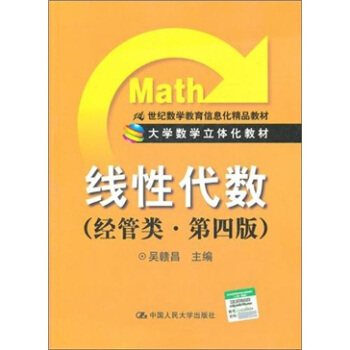
![微分几何中嘉当的活动标架法和外微分系统初步(英文版) [Cartan for Beginners:Differential Geometry Via Moving Frames and Exterior Differential Systems] pdf epub mobi 电子书 下载](https://pic.tinynews.org/12118838/58b7eec3Na6355b93.jpg)
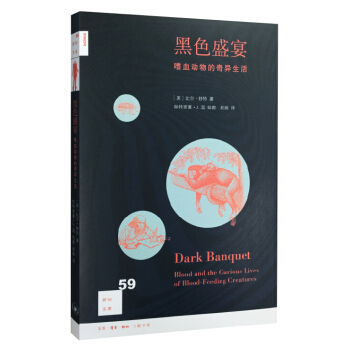
![偏微分方程(第二版)(英文版) [Partial Differential Equations(Second Edition)] pdf epub mobi 电子书 下载](https://pic.tinynews.org/12118820/58b64434Nb10d4937.jpg)

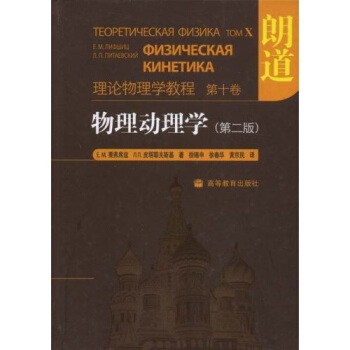


![基因的分子生物学(第七版) [Molecular Biology of the Gene] pdf epub mobi 电子书 下载](https://pic.tinynews.org/11672603/552b7771N0a9cf36d.jpg)
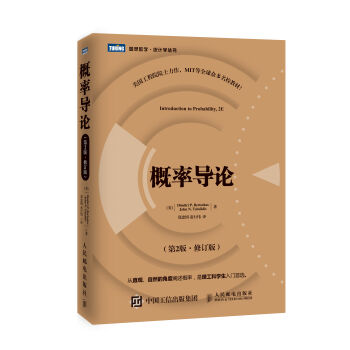
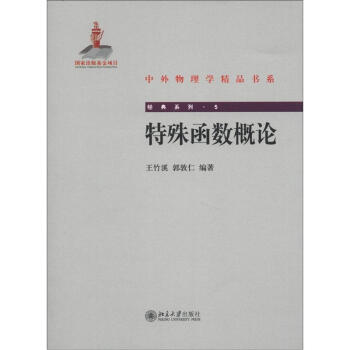

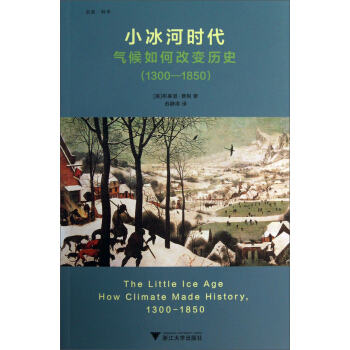

![可再生能源与二氧化碳地质储存 [Renewable Energy and CO2 Geological Storage] pdf epub mobi 电子书 下载](https://pic.tinynews.org/11898163/57079e14N31b9e2ab.jpg)
![最优输运理论专题(第二版 英文版) [Topics in Optimal Transportation(Second Edition)] pdf epub mobi 电子书 下载](https://pic.tinynews.org/12038125/58b61eefN64d4e94c.jpg)
